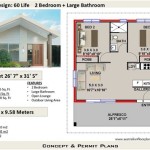How To Build A Bedroom Closet: A Step-by-Step Guide
Constructing a bedroom closet is a practical and valuable home improvement project. It increases storage space, enhances organization, and can potentially raise the property value. This article details a comprehensive approach to building a bedroom closet, covering the essential stages from planning and preparation to construction and finishing. The goal is to provide clear instructions that can be adapted to various bedroom layouts and personal storage requirements.
Before commencing any construction project, thorough planning is indispensable. This initial stage involves determining the available space, defining the closet's dimensions, and creating a detailed design that aligns with both the room’s aesthetics and the user’s storage needs. Accurate measurements are paramount to prevent costly errors later in the process.
1. Planning and Design
The first step in building a closet is to meticulously assess the available space. This necessitates measuring the length, width, and height of the designated area. Consider any obstructions such as windows, doors, or electrical outlets, and factor these into the design. The dimensions obtained will dictate the maximum size of the closet. It is advisable to allow for a small margin of error to accommodate any irregularities in the walls or flooring.
Next, decide on the type of closet doors desired. Options include hinged doors, sliding doors, bi-fold doors, or no doors at all (an open closet design). The choice of door style will significantly impact the overall design and the necessary clearances around the closet opening. Hinged doors require sufficient swing space, while sliding and bi-fold doors are ideal for smaller rooms. Open closets provide easy access but necessitate a more organized and visually appealing interior.
The interior design of the closet is equally crucial. Consider the types of items that will be stored in the closet. Will it primarily hold clothes, shoes, accessories, or a combination of items? Plan the closet layout accordingly. Common closet components include shelves, hanging rods, drawers, and shoe racks. A well-designed closet maximizes storage efficiency and accessibility.
Sketch a detailed plan of the closet, including all dimensions, the placement of shelves and rods, and the location of doors. This plan serves as a blueprint throughout the construction process. It's helpful to use a computer-aided design (CAD) program or even a simple paper sketch to visualize the finished product. A visual representation aids in identifying potential design flaws or areas for improvement before any materials are purchased.
Finally, create a comprehensive materials list based on the design. This list should include all lumber, hardware (screws, nails, hinges, door handles), paint or stain, and any other necessary components. Accurate quantities will minimize waste and prevent unnecessary trips to the hardware store. It is always advisable to purchase slightly more material than estimated to account for errors or cuts.
2. Materials Acquisition and Preparation
Selecting the appropriate materials is fundamental to the durability and aesthetic appeal of the closet. Lumber choices include solid wood, plywood, and medium-density fiberboard (MDF). Solid wood offers superior strength and a natural look but is generally more expensive. Plywood provides a good balance of strength and affordability, while MDF is a cost-effective option for shelving and other non-structural components.
Once the materials have been acquired, proper preparation is essential. This includes cutting the lumber to the required dimensions according to the design plan. Use a circular saw, miter saw, or jigsaw to make accurate and clean cuts. It is imperative to wear safety glasses and ear protection during the cutting process. Ensure that all cuts are square and that the lumber is free from splinters or rough edges.
Sanding the lumber is another critical step in the preparation process. Sanding smooths the surfaces, removes imperfections, and prepares the wood for painting or staining. Use a palm sander or sanding block with progressively finer grits of sandpaper. Start with a coarser grit to remove any significant imperfections and then gradually move to finer grits for a smooth finish. Dust off the sanded surfaces with a tack cloth to remove any remaining dust particles.
If painting or staining is desired, apply the finish to the lumber before assembly. This is generally easier than painting or staining the assembled closet. Use a high-quality primer to prepare the wood for the paint or stain. Apply the primer evenly and allow it to dry completely before applying the paint or stain. Follow the manufacturer's instructions for application and drying times.
Gather all necessary tools for the construction process. Essential tools include a drill, screwdriver, level, stud finder, measuring tape, hammer, and safety glasses. Having all the tools readily available will streamline the construction process and minimize frustration.
3. Construction and Assembly
The construction phase begins with locating the wall studs using a stud finder. Mark the location of the studs on the walls, as these will serve as anchor points for the closet frame. Proper anchoring to the studs is crucial for the structural integrity of the closet.
Begin assembling the closet frame, typically consisting of vertical supports (side panels) and horizontal supports (top and bottom panels). Use screws or nails to join the frame components together. Ensure that all joints are square and secure. A level is essential to ensure that the frame is plumb and level.
Attach the frame to the wall studs using screws or nails. Drive the fasteners through the frame and into the studs, ensuring a secure connection. Check the frame's plumb and level again after it is attached to the wall. Make any necessary adjustments before proceeding.
Install any shelves, drawers, or hanging rods according to the design plan. Shelves can be supported by adjustable shelf supports or fixed supports. Drawers typically require drawer slides for smooth operation. Hanging rods should be securely mounted to the closet frame with appropriate hardware.
Install the closet doors. If using hinged doors, attach the hinges to the door and the closet frame. Ensure that the doors swing freely and close properly. Adjust the hinges as necessary to align the doors. If using sliding or bi-fold doors, follow the manufacturer's instructions for installation. The ease of access and proper closure of the doors are important consideration.
4. Finishing and Detailing
Once the closet is assembled, focus on the finishing touches. This includes filling any nail holes or screw holes with wood filler. Allow the wood filler to dry completely and then sand it smooth. Apply a final coat of paint or stain to the closet interior and exterior. This coat should match the initial color used and provide a uniform and aesthetically pleasing finish.
Install any trim or molding around the closet opening to conceal any gaps or imperfections. Trim can be cut to size using a miter saw and attached to the closet frame with nails or adhesive. Consider the style of the room when selecting the trim to ensure that it complements the overall decor.
Install any remaining hardware, such as door handles or knobs. Choose hardware that is both functional and aesthetically pleasing. Ensure that the hardware is securely attached to the doors or drawers.
Clean the closet interior and exterior thoroughly. Remove any construction debris, dust, or fingerprints. A clean closet contributes to a more organized and functional space.
Finally, organize the closet by placing items in their designated locations. Utilize storage containers, baskets, or dividers to maximize space and maintain organization. A well-organized closet enhances accessibility and makes it easier to find items when needed.

Building Closet Storage Anywhere With Create A

How To Build A Diy Closet In Bedroom Thediyplan

How To Build A Small Bedroom Closet For Added Storage Chatfield Court

Diy How To Build Cabinet Style Closets Flank Your Bed Double Bedroom Storage Addicted 2 Decorating

How To Build A Bedroom Closet Youtube

How To Build A Small Bedroom Closet For Added Storage Chatfield Court

How To Build A Bedroom Closet Youtube

How To Build A Small Bedroom Closet For Added Storage Chatfield Court

Diy Closet System Update Southern Revivals

How To Build A Closet Hometips Remodel Wall








